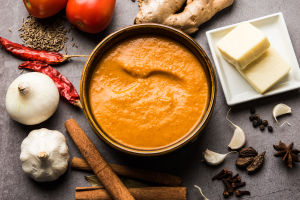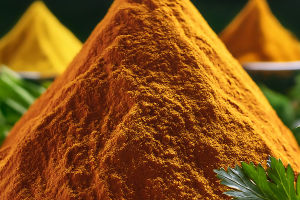Turmeric, a deep golden-orange spice, is widely known for its ability to enhance color, flavor, and nutritional value in a variety of dishes.
This spice, derived from the rhizome (root) of a native Asian plant and closely related to ginger, has been a staple in cooking for centuries.
Its use extends beyond the kitchen, however, as turmeric has also been employed in Ayurvedic and traditional Chinese medicine for hundreds of years.
The Proven Magic of TURMERIC for your HEALTH
Video by Dr. Suneel Dhand
What Is Turmeric Good For?
Turmeric's primary active ingredient is curcumin, a natural compound that boasts both antioxidant and anti-inflammatory properties. These properties make turmeric a valuable addition to the diet.
Curcumin and Its Benefits: Curcumin, though not fully understood, has been linked to numerous health benefits. Like other plant-based foods with vibrant colors, turmeric is rich in phytonutrients that can protect the body by neutralizing free radicals from pollution and sunlight. These phytonutrients help protect cells from damage and are associated with the prevention of diseases like cancer and heart disease.
Managing Inflammation: Turmeric is particularly beneficial for those seeking to manage inflammation. It is commonly used for conditions like arthritis, colitis, allergies, and infections. Those suffering from joint pain or inflammation may find adding turmeric to their diet beneficial.
The Science Behind Turmeric
Dear Lykkers, numerous studies have explored the benefits of turmeric and its components, including curcumin. Some studies have shown that people with osteoarthritis experienced less joint pain after consuming turmeric in recipes. Research into the effects of turmeric on mood disorders, depression, and dementia is still ongoing, and while the studies have been small, further research may reveal additional benefits.
Potential Benefits of Turmeric: Research has indicated that turmeric may offer benefits for the following conditions:
Inflammation
Degenerative eye conditions
Metabolic syndrome
Arthritis
Hyperlipidemia (high cholesterol)
Anxiety
Muscle soreness after exercise
Kidney health
How to Enjoy Turmeric
Turmeric is commonly used as a natural coloring agent in mustard and as an essential component in curry powder. Its earthy flavor adds depth and color to dishes like Thai cuisine, stews, and chilis. It is also a great addition to chicken soup.
Using Fresh Turmeric: Fresh turmeric root can be found in the produce section. To keep it fresh, pieces of turmeric root can be placed in freezer bags and stored in the freezer for up to six months. However, be cautious, as the yellow pigment of turmeric can stain countertops and fabric. A gentle abrasive or chlorine-based cleaner will remove stains from most surfaces.
Turmeric Tea
Turmeric root, much like ginger, can be transformed into a nourishing and flavorful tea. Here’s how you can make your own:
Ingredients:
2 tablespoons chopped turmeric root or 2 teaspoons turmeric powder
1-2 cups water
Directions:
Bring the water to a boil and add turmeric.
Lower the heat and simmer for 5 minutes.
Strain the tea.
The tea can be enjoyed warm or cold. You can enhance the flavor by adding lemon and/or honey.
Recipe: Curried Pumpkin and Butternut Squash Creamy Vegan Soup
Ingredients:
Olive oil
1 pound each of pumpkin and butternut squash, peeled and diced
2 shallots, diced
2-3 tablespoons Thai red curry paste
2 tablespoons grated turmeric root or 2 teaspoons turmeric powder
4 cups vegetable stock or broth
1 can unsweetened coconut milk (full-fat or low-fat)
Salt and pepper to taste
Directions:
Roast the pumpkin and butternut squash with olive oil, salt, and pepper at 400 degrees Fahrenheit for 10-15 minutes, until fork-tender.
In a large-pot or Dutch oven, sauté the shallots, red curry paste, and turmeric in olive oil for 8-10 minutes, until the shallots are soft and translucent.
Add the vegetable broth and roasted pumpkin and squash to the-pot.
Let the mixture simmer for at least 20 minutes, adjusting salt, pepper, or red curry paste to taste.
Stir in the coconut milk and continue simmering.
Blend the soup using a stand blender or immersion blender until smooth.


